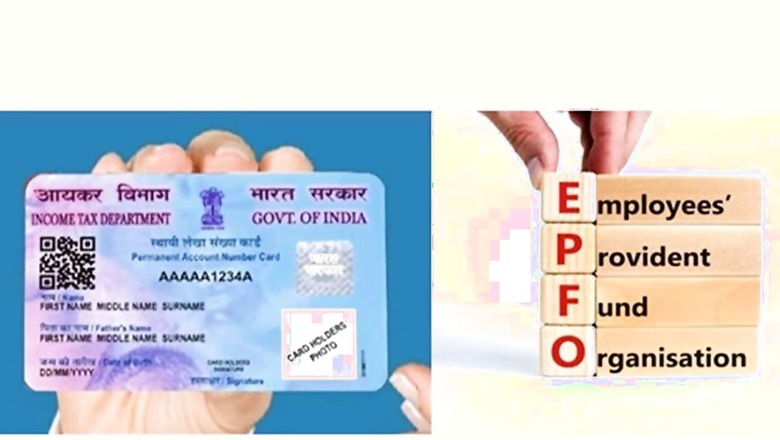
views
The Permanent Account Number (PAN) plays an important role in the Employees Provident Fund Organisation (EPFO). According to EPFO, if you link your PAN number with Universal Account Number (UAN) then you can avail tax benefits on EPF withdrawal. Every member is allotted a single permanent UAN which can be used for availing benefits during their lifetime service.
Members should activate their UAN with Mobile Number and seeding the mandatory KYCs i.e., Aadhaar, Personal Bank Account Number and PAN with respective UAN.
Difference between PAN and UAN
PAN and UAN are two different identification numbers that are issued by different authorities. PAN is issued by the Income Tax Department, while UAN is issued by the EPFO.
Also Read: EPFO Nomination Not Done? Check This Online Step-By-Step Guide To Add Details
PAN is a 10-digit alphanumeric number, while UAN is a 12-digit number. PAN is used for a variety of purposes, including filing income tax returns, opening bank accounts, and investing in financial products. UAN is used to track your EPF account and to process EPF-related transactions.
Verify the identity of the EPF account holder: The PAN number is a unique identifier that is issued by the Income Tax Department. This helps to ensure that the EPF account is linked to the correct person.
Process online EPF claims: In order to process online EPF claims, the EPFO requires the PAN number of the account holder. This is because the PAN number is used to verify the identity of the account holder and to ensure that the claim is processed correctly.
Calculate the tax deduction on EPF withdrawals: If the EPF account holder has not linked their PAN with their EPF account, then tax calculation is difficult. This is because the EPFO will not be able to verify the identity of the account holder and the amount of tax that they should have paid.
If you are an employee who contributes to the EPF, it is important to know your UAN number. You can find your UAN number on your salary slip, by logging into the EPFO’s website, or by contacting your employer.




















Comments
0 comment